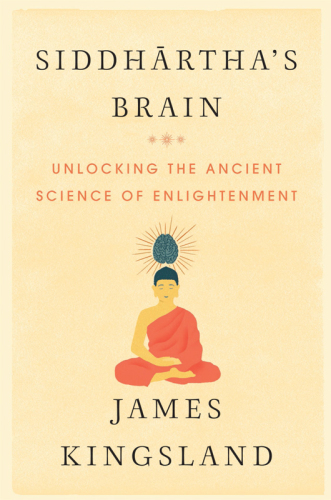
Siddhartha's Brain
Unlocking the Ancient Science of Enlightenment
کتاب های مرتبط
- اطلاعات
- نقد و بررسی
- دیدگاه کاربران
نقد و بررسی

March 14, 2016
Guardian science editor Kingsland presents a fascinating exploration of the studies of enlightenmentâwhere the experience of meditative spiritual practice meets the rigors of scientific research. Kingsland suggests that the ubiquitous presence of psychiatric illnesses may be alternatively understood as an "extreme manifestation of ordinary human condition," and if this is the case, the practice of meditation should (in theory) alleviate afflictions caused by a mental apparatus gone haywire. To fix the errant mental system, Buddhism prescribes meditation: one pays attention to the breath, practices non-judgmental awareness, and calmly observes the landscape of thoughts. Kingsland skillfully dives in and out of various subjectsâthe neurological relaxation response to meditation, the difference between pain and suffering, emotional regulationâand effectively paints a neurological picture of the mind without devaluing Buddhism's spiritual image of cognition. Science shows that meditation reworks neurological networks to better regulate and manage the emotions; in short, being a good, contented human being is a skill that can be learned. Based on this idea, Kingsland offers guided practices at the end of every chapter, ranging from attention to the breath to metta (loving-kindness) meditations. Kingsland's book is a cursory but fascinating exploration of the neuroscience behind meditation, and he offers a wonderful starting point for further research and practice.

April 1, 2016
In this work, Kingsland (science editor, Guardian) expertly weaves the story and teachings of the Buddha with clinical and scientific research to engage in a highly readable examination of the benefits of mindfulness and meditation. The author applies Buddhism and science to illustrate how humans' complex "neural machinery" hardwires us for suffering. With chapters devoted to the discussion of depression, chronic pain, and addiction, he employs case studies to highlight the effectiveness of various mindfulness-based therapies, although he doesn't shy away from presenting the challenges to and limitations of those investigations. While intended for a lay audience, the work adeptly incorporates Buddhist and scientific terminology in such a way that concepts are easily understood through the context of the narrative. Several guided meditations are included to provide readers an opportunity to try the practices discussed. VERDICT Both skeptics and believers of the mental and physical benefits of mindfulness and meditation will find this to be a satisfying read. Those who are struggling with their own form of suffering might also appreciate the discussion of alternative therapies.--Amanda Folk, Univ. of Pittsburgh Lib., Greensburg
Copyright 2016 Library Journal, LLC Used with permission.

























دیدگاه کاربران